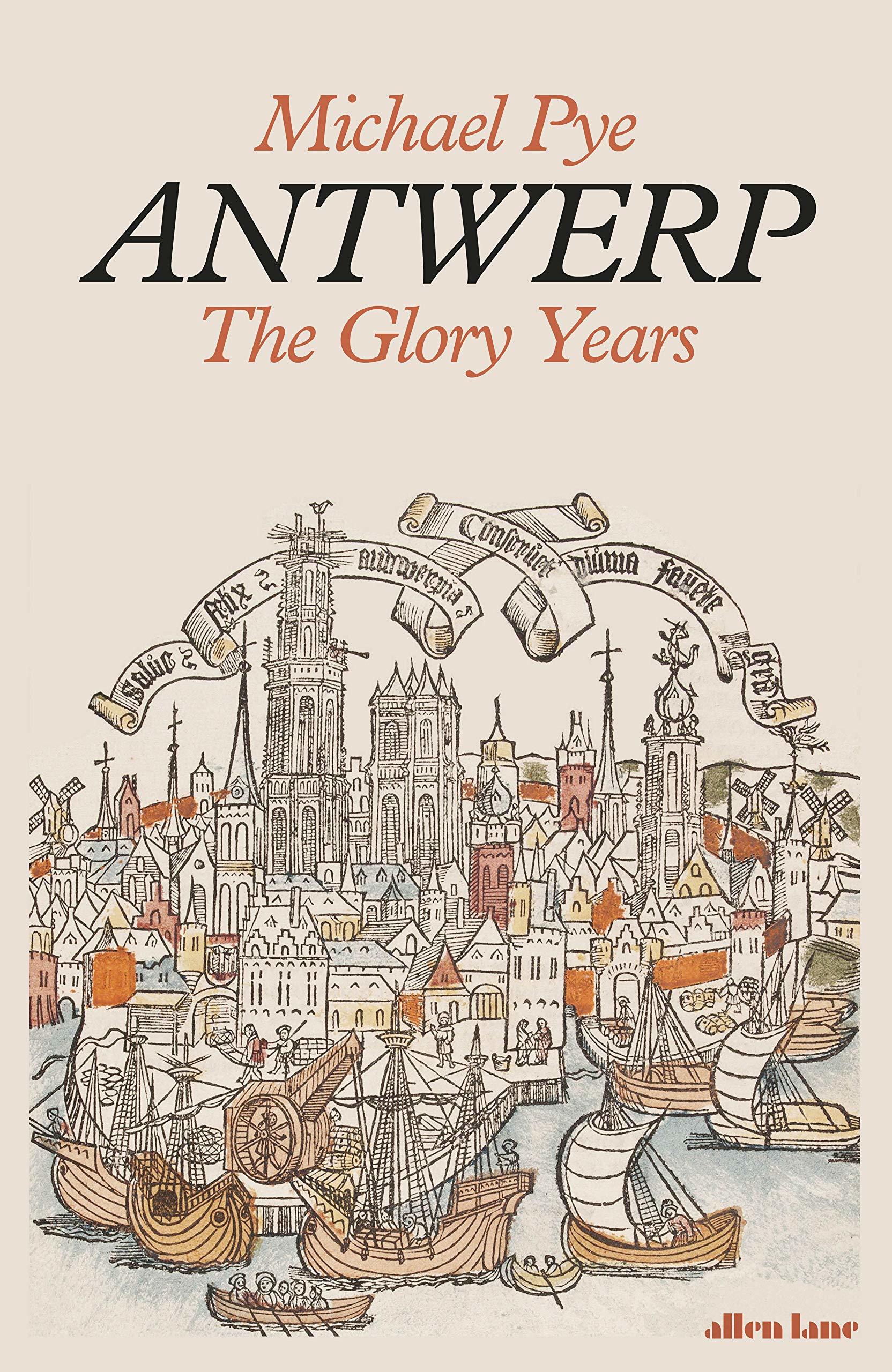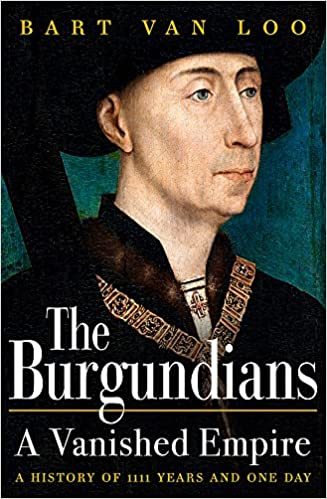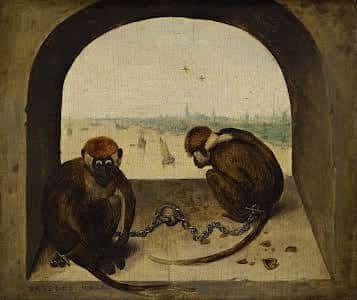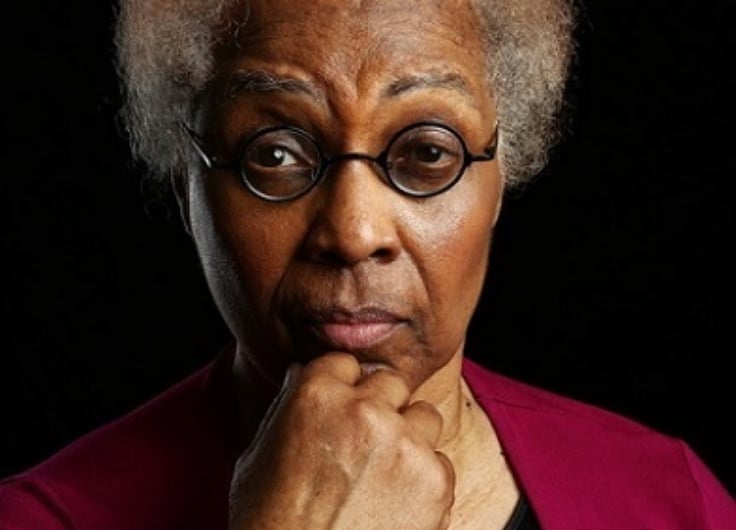In 16th Century Antwerp, Anything Was Possible and Everything Was Allowed
As long as trade could continue unhindered, authorities in sixteenth-century Antwerp would willingly turn a blind eye. It was in this context that the city experienced an unprecedented economic and cultural boom. Michael Pye tells the story of this city on the River Scheldt with great panache, but doesn’t always consider some of the most recent historical insights.

British journalist and historian Michael Pye, known for his book The Edge of the World: How the North Sea Made Us What We Are (2014), has made my life as a reviewer a little easier. I’m often asked by foreign friends and colleagues if I know of a good book about Antwerp in its Golden Age. For a long time, I had to recommend several different books to them, none of which offered a real synthesis of the topic. Since last year I can recommend Wild Woman by Jeroen Olyslaegers – a masterful novel set in Antwerp. And for those who prefer non-fiction, I can now suggest Antwerp. The Glory Years by Michael Pye.
Let’s dissect the subtitle first: The Glory Years. Pye defines years as the period from the beginning of the sixteenth century to “the aftermath of the Iconoclasm” in 1566. Glory is considered by the author as “the time when the city was able to express its own character and individuality and was more than just another dot on the maps that Charles V, Holy Roman Emperor liked to have made, to show where his rule stretched.” This is Antwerp during its greatest heyday, a period in which the city experienced a spectacular economic boom that attracted people and goods from all over Europe and the world. For a short time, and according to a well-known quip – the rest of Europe was merely a car park for Antwerp.
 Michael Pye
Michael Pye© Al Richardson
The author guides you through the city and its streets and squares that today one would no longer associate with the sixteenth century. Pye builds his narrative using a series of stories about all kinds of historical characters, including famous figures such as Christoffel Plantin, as well as lesser-known ones like the Mendes family, who were on the run from the Portuguese Inquisition. He also writes about people totally unknown to the general public, such as Dierick Paeschen, a tour operator who organised avant-la-lettre pilgrimages to Jerusalem. Each of these compellingly written stories points to a trend that became visible in Antwerp: the development of the printing press, the expulsion of crypto-Jews from the Iberian Peninsula and the traveler networks of which the city was a part, to name just a few.
Pye pulls out all the stops to understand the city: he uses contemporary novellas, paintings, songs, schoolbooks, and archives from home and abroad. He even includes a selection of amusing doodles found in the Antwerp archives, drawn in the thick Civil Registration Record registers by bored clerks. Ironically, the author’s choice for less well-trodden paths means that he writes almost nothing about Antwerp’s cathedral and town hall, iconic buildings that we often associate with Antwerp’s Golden Age. A tourist with an interest in history may therefore be left a little wanting, while they read Pye’s latest efforts on the train to Antwerp Central.
The Duke of Alba wrote to Philip II in 1568 that Antwerp was a total Babylon
What then is the common thread throughout the book? In sixteenth-century Antwerp, people weren’t sticklers for the rules. You could experiment to your heart’s content with unorthodox religious ideas, scientific innovation, sexuality, and financial speculation (financialization in fact, according to Pye, originated in sixteenth-century Antwerp). The aldermen let it be, anything was possible, and everything was allowed… as long as the trade on which the wealth of the city was based was not endangered. Of course, this did not go down well with everyone: for example, the Duke of Alba wrote to Philip II in 1568 that Antwerp was a total Babylon.
Although the book tells the history of sixteenth-century Antwerp, the present also lurks around the corners. The many passages describing the links between England and Antwerp may hint at what the author thinks about Brexit. The stories about curfews and remedies against the plague are reminiscent of the Covid-19 pandemic, and corruption scandals surrounding Antwerp real estate also appear to be nothing new.

Pye has based his biography of Antwerp on the work of historians and art historians, but has written his book for a broad, international audience. There is a huge demand for these kinds of historical monographs at the moment, as we’ve seen with Bart Van Loo’s 2019 best seller The Burgundians. As a historian, I can only applaud all of this interest. Pye is also clearly a passionate storyteller, but he doesn’t always take the most recent insights of historians into account. For example, he begins the Antwerp glory years with the decline of Bruges. According to Pye, Bruges perished because the Zwin coastal inlet silted up. Historians, however, have been disproving this claim for decades: the Zwin silted progressively because the Bruges economy was declining and could no longer afford the necessary investments to maintain it as an access point to the North Sea.
Pye’s emphasis on this is odd because he does point to the political revolts that ravaged the county of Flanders at the end of the fifteenth century. The uncertainty that these political revolts brought about formed the basis for why Antwerp became the new trading metropolis of the Low Countries. In addition, the idea that the Antwerp economy had liberal tendencies because it was not restrained by crafts and guilds like in Bruges, has also been thoroughly revised by recent historical research. This reproduction of historical myths is all the more striking because Pye is well-read, judging by the endnotes. But sometimes he is very selective with recent historiography.
The story is told in fits and starts from time to time: there are quite a few abrupt jumps and on occasion Pye expects quite a lot of background knowledge from the reader. The book meanders from 1500 to 1585 – the Fall of Antwerp – but there is no clear chronology, and this is precisely something that historians have researched in great detail. For example, there were clear economic ups and downs within this period, meaning that one decade is not the same as the next.
 Two monkeys by Pieter Bruegel the Elder, with Antwerp and the river Scheldt in the background
Two monkeys by Pieter Bruegel the Elder, with Antwerp and the river Scheldt in the background© Gemäldegalerie, Museen Berlin
Such issues show how difficult it is to reconcile two different genres: on the one hand, a scientific historical account that incorporates the most recent literature, whilst on the other, a story written for the general public. This difficulty might be down to the enormity of the subject and the Pye’s kaleidoscopic view of it.
Fiction writer Jeroen Olyslaegers succeeds better in providing a historical analysis with Wild Woman – thanks to his great imagination, a smaller cast of characters and a more focused storyline that mixes fiction with facts. In any case, the confrontation of more or less the same story embedded in two different genres, does get one thinking. Perhaps it is an exercise for readers with a lot of time.
Aside from these criticisms, Antwerp. The Glory Years provides a good introduction to the rich history of the city of Antwerp and the book takes in a panoramic view of many fascinating facets about which so much can and still needs to be written.












